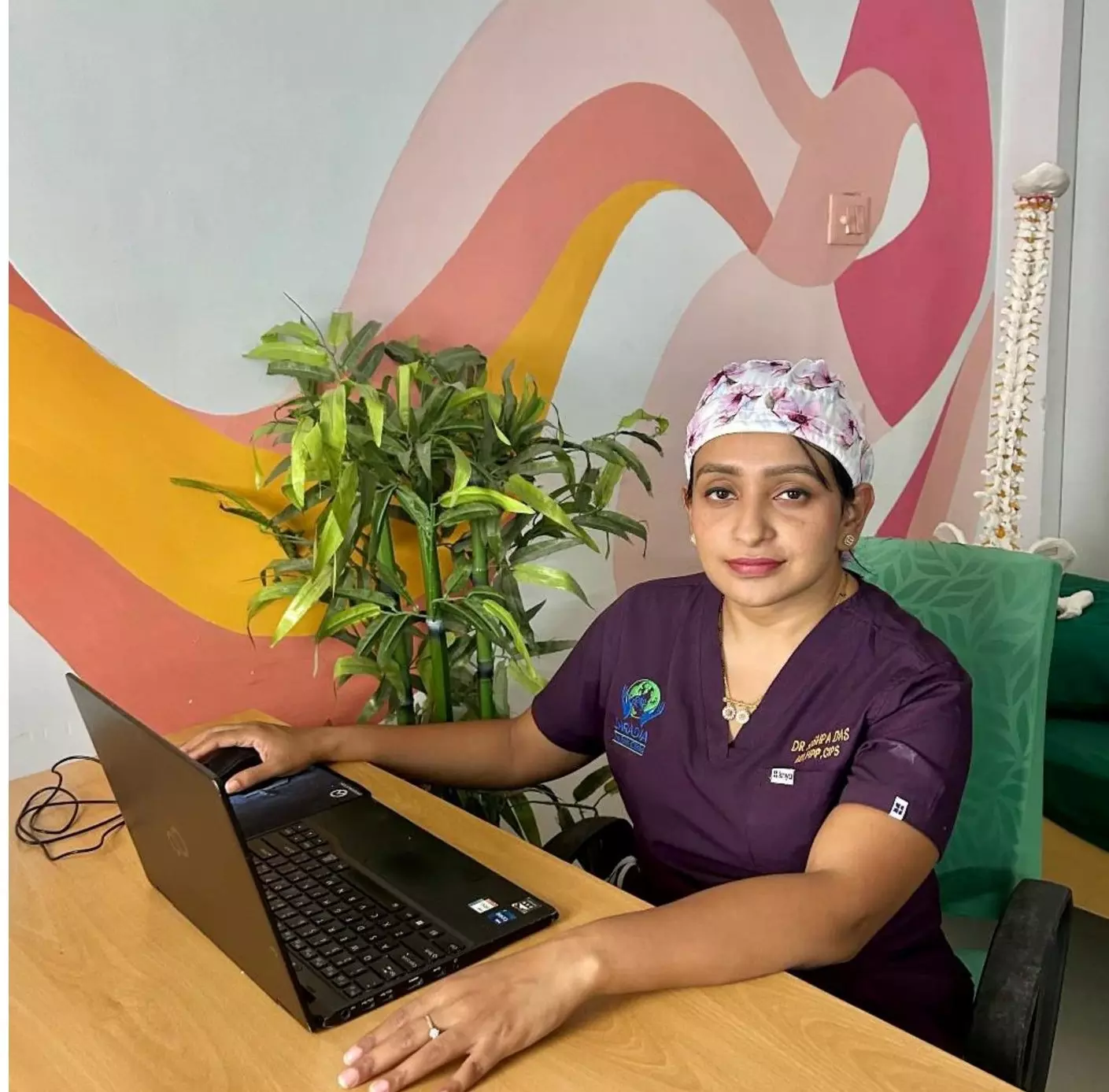Daradia’s New Ultrasound Simulator Brings High-Tech Pain Medicine Learning
Gone are the days when learning musculoskeletal ultrasound meant crowding around cadaver tables or booking sessions with volunteers

Kolkata: In a bold move that could redefine medical education in India, Kolkata-based Daradia: The Pain Clinic has launched a web-based musculoskeletal (MSK) ultrasound simulator, the first of its kind in the country. Aimed primarily at teaching sonoanatomy for pain-related ultrasound-guided interventions, the tool promises to make high-quality, hands-on learning more accessible than ever.
Gone are the days when learning musculoskeletal ultrasound meant crowding around cadaver tables or booking sessions with volunteers. Daradia’s simulator eliminates the need for any physical infrastructure. What sets this platform apart is its use of real ultrasound images—not animated models or AI-generated visuals. And all of it is available on a regular web browser, with no software installation or hardware required.
“This isn’t just about technology—it’s about equality,” says Dr. Gautam Das, founder of Daradia and one of the leading voices in interventional pain medicine globally. “Doctors in small towns or developing regions often never get to attend cadaveric workshops or have access to training equipment. With this, we’re putting world-class training within their reach.”
The simulator is designed for pain physicians, but its utility spans across specialties like radiology, anesthesiology, orthopedics, neurology, and physical medicine and rehabilitation (PM&R)—all of which increasingly use MSK ultrasound in both diagnosis and treatment.
Real Feedback from Real Users
In just a few months since its soft launch, the simulator has already attracted close to 1,000 users from India and overseas. Structured feedback collected from 131 doctors gives a clear picture of its effectiveness:
- 94% had previous hands-on experience with cadavers or volunteers.
- Users gave a recommendation score of 9.48/10.
- The realism of ultrasound images was rated at 8.96/10.
- Usefulness for actual clinical procedures scored an impressive 9.16/10.
A Mumbai-based pain specialist who tried the platform said, “I’ve been to cadaver labs, but I can’t go back there every week. This tool let me revisit shoulder anatomy multiple times until I truly understood it. That’s the kind of practice we need.”
The simulator allows users to navigate real anatomical zones, follow step-by-step scanning paths, and develop a visual and spatial understanding of how probe movement affects what’s seen on screen—a crucial skill in interventional pain procedures like nerve blocks and joint injections.
A Collaborative Vision
The simulator was developed not by a tech company in isolation, but by a close-knit team of clinicians and engineers working together.
Dr. Sushpa Das, senior consultant and a core team member, emphasizes its pedagogical strength:
“We didn’t want to create just another simulator. We wanted it to function like a virtual teacher. Every image, every label, every section was created with a learner in mind. It's a journey through anatomy—without needing a patient or cadaver.”
On the technology front, Ms. Nandini Vanzara, the engineering lead and project architect, says the biggest hurdle was delivering high-quality real images through a browser without lags.
“Doctors expect clean, responsive tools. We focused on how clinicians think and made the interface intuitive. No fluff, just smart, fast learning,” she explains.
The platform is fully mobile-responsive and compatible with all modern browsers, making it usable on laptops, tablets, and even smartphones. This ensures that doctors—regardless of their practice setting—can continue learning without disruption.
Filling a Glaring Educational Gap
As more medical specialties adopt ultrasound guidance for interventions, the need for accurate MSK sonoanatomy training has never been more urgent. However, very few institutions offer hands-on training, and even fewer do so at a reasonable cost.
“There’s a myth that only large institutions can deliver quality education,” says Dr. Das. “This tool proves otherwise. You can train from your home, clinic, or hospital, pause when needed, and resume whenever you like. That’s real learning.”
The simulator is part of Daradia’s broader effort to promote affordable, evidence-based, and accessible education in pain medicine. The clinic also offers a wide range of programs—from short online courses to one-year fellowships, cadaver-based workshops, and AI-powered simulation training. Its international alumni come from across Asia, Europe, Africa, and the Middle East.
Get Started — For Free
To encourage widespread adoption, Daradia is offering a free trial module to any interested doctor.
Physicians can register at: https://daradiasimlearn.com
As medical learning evolves, Daradia’s simulator marks a significant step forward—bridging gaps, expanding access, and enabling doctors across the world to learn smarter and treat better.
